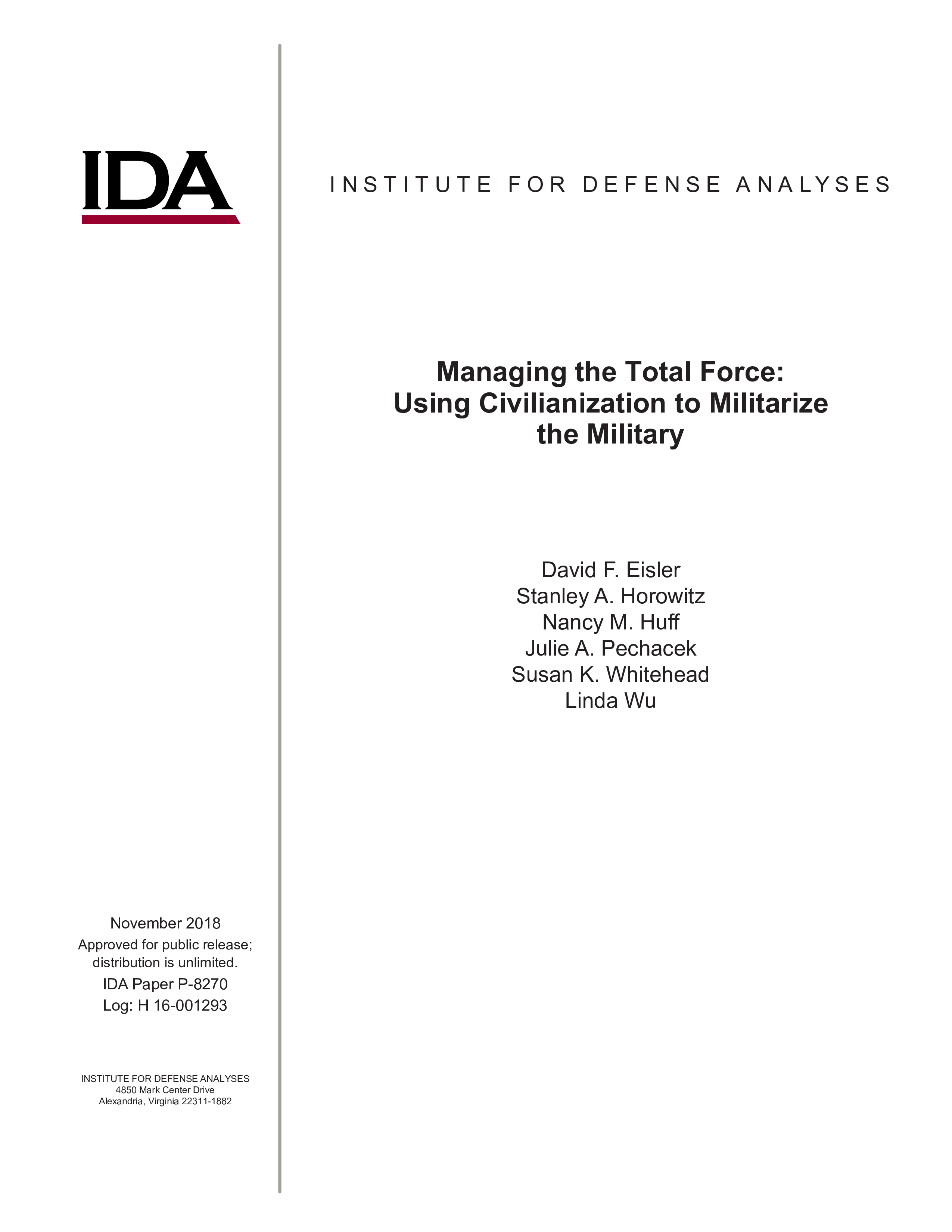Managing the Total Force: Using Civilianization to Militarize the Military
November, 2018
IDA document: P-8270
FFRDC: Systems and Analyses Center
Type: Documents,
Talent Management
Division: Cost Analysis and Research Division
Authors:
IDA document: P-8270
FFRDC: Systems and Analyses Center
Type: Documents
Division: Cost Analysis and Research Division
Authors:
Authors
David F. Eisler, Stanley A. Horowitz, Nancy M. Huff, Julie A. Pechacek, Susan K. Whitehead, Linda Wu
See more authors

